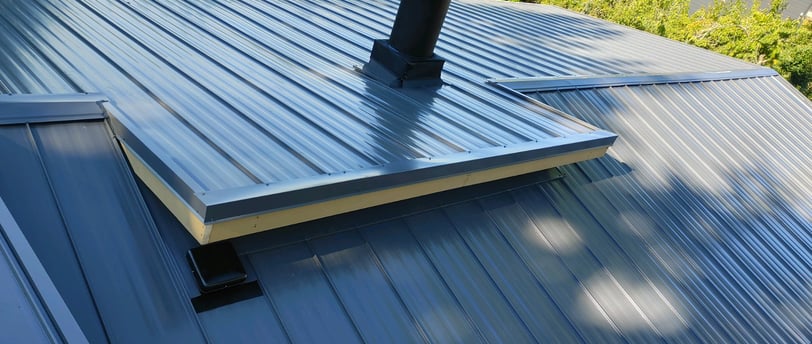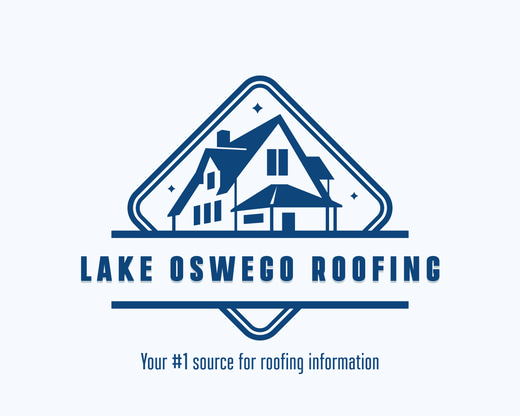What plywood should be used for metal roofing?
There is a lot of questions about the thickness of plywood needed for metal roofing. In this blog, we talk about what is ideal when considering a metal roof in Lake Oswego, OR
1/10/20252 min read


Proper Size Plywood for a Metal Roof
When installing a metal roof, choosing the correct plywood size is crucial for ensuring a secure, durable, and effective roofing system. The plywood provides a solid foundation for the metal roofing panels, supporting their weight and adding structural integrity to the overall roof. Here's a guide to understanding the proper size of plywood for a metal roof.
Key Considerations When Choosing Plywood for a Metal Roof
Roof Slope and Span
The slope and span of the roof play a significant role in determining the thickness and type of plywood needed. Steeper roof pitches may require stronger support, as there is a higher potential for wind uplift and snow accumulation.
For roofs with a moderate slope, typically a 5/8-inch thick plywood (plywood with a span rating of 32/16) is suitable.
For roofs with a steeper pitch or larger spans, a thicker plywood (such as 3/4-inch) might be required to ensure the roof can bear additional weight and stress.
Plywood Thickness
The thickness of the plywood is an essential factor in determining its ability to provide proper support. Common thicknesses for plywood used in roofing include:
1/2 inch: Typically used for roofs with shorter spans and low slopes.
5/8 inch: Standard for most residential applications, providing adequate strength for average roof spans.
3/4 inch: Ideal for larger spans, steeper pitches, and areas where heavier snow loads are a concern.
Plywood Grade
The grade of plywood affects its durability and resistance to the elements. For roofing applications, CDX plywood is a popular choice. CDX refers to a grade of plywood that is exterior-rated and resistant to moisture. It is essential that the plywood used is rated for outdoor use, as it will be exposed to varying weather conditions.
Plywood Span Rating
The span rating printed on plywood sheets indicates how far apart the roof rafters can be spaced while still providing adequate support. For example, a 32/16 rating means the plywood can span 32 inches between supports on the roof deck and 16 inches on the floor or walls.
For metal roofing applications, the span rating should match the spacing of the roof trusses or rafters. A common truss spacing is 24 inches, which may require a plywood thickness of at least 5/8 inches, depending on the load requirements.
Support and Fastening
The plywood should be properly fastened to the roof trusses or decking. Using appropriate fasteners such as nails or screws designed for roofing applications ensures that the plywood is securely attached to the roof structure.
When installing metal roofing panels, the fasteners should penetrate through the plywood and into the underlying trusses for added security.
Installation Tips for Metal Roofs
Vapor Barrier: Consider installing a vapor barrier between the plywood and metal roofing panels. This helps prevent moisture buildup and protects the plywood from potential damage caused by condensation.
Ventilation: Proper attic ventilation is crucial in preventing moisture accumulation on the underside of the plywood, which could lead to rot over time. Ensuring that your roof is adequately ventilated will help prolong the life of the plywood and the metal roofing system.
Seam Sealing: When installing metal roofing panels over plywood, make sure the seams are sealed properly to prevent water from seeping into the plywood, which could cause rotting and other issues.
Conclusion
Selecting the correct plywood size for a metal roof is essential for providing the structural support needed to ensure a long-lasting and stable roofing system. Always consider factors such as roof slope, span, plywood thickness, and grade when choosing your materials. Proper installation and maintenance will help protect both the plywood and the metal roof, ensuring a durable and efficient roofing system for years to come.
Click Here for more info on Metal Roofing
Roof Replacement
Your #1 source for roofing information
Team
Get a free Quote today!
971-404-5746
Infinity Roofing & Construction
© 2024. All rights reserved.
